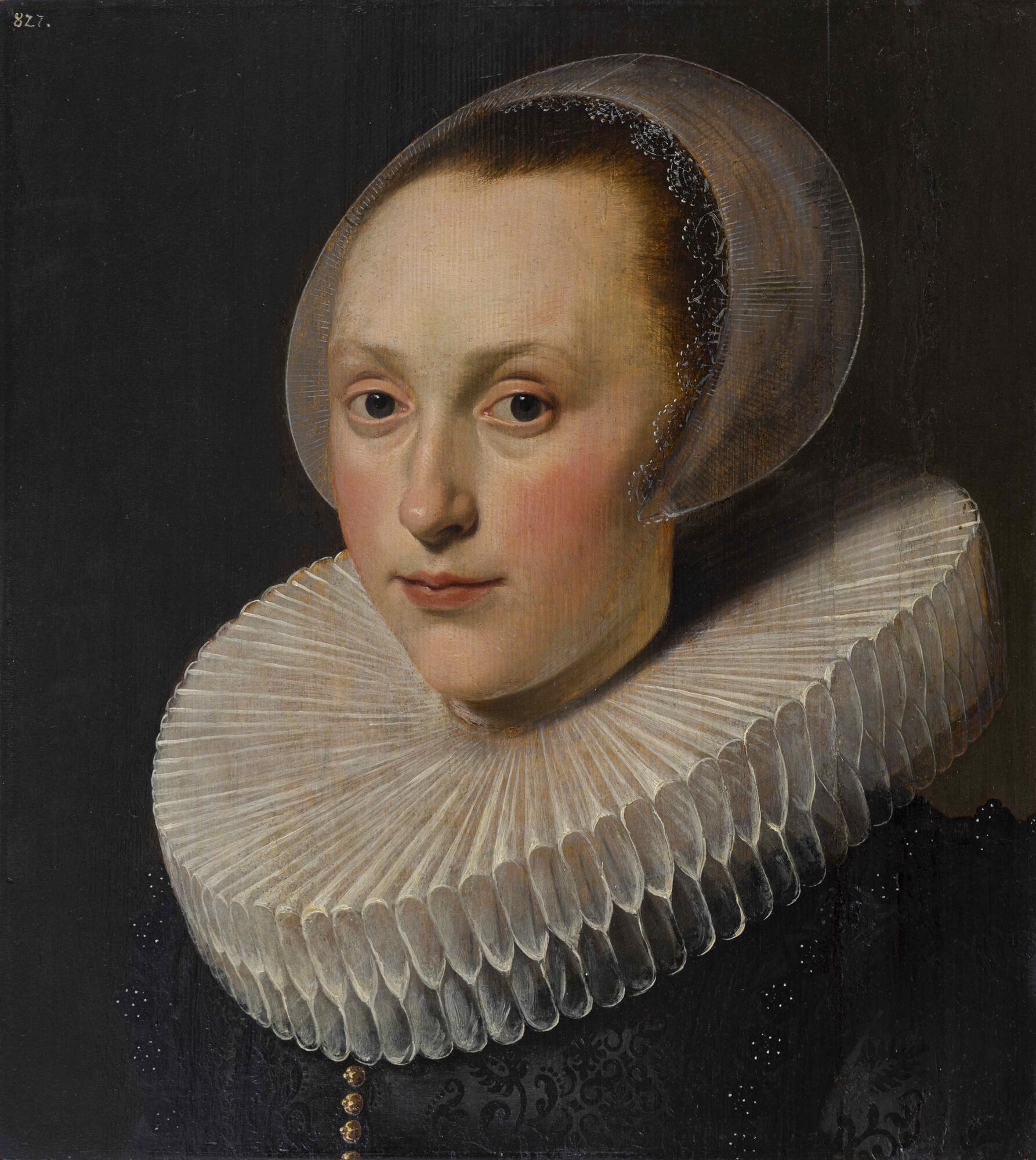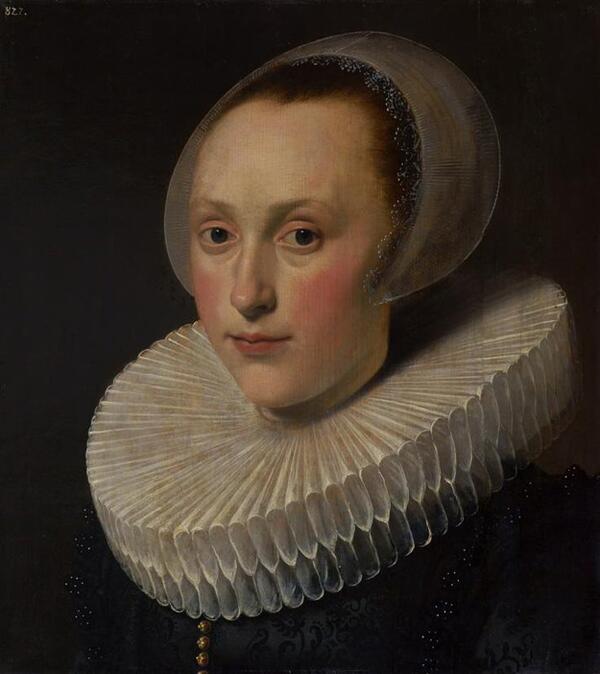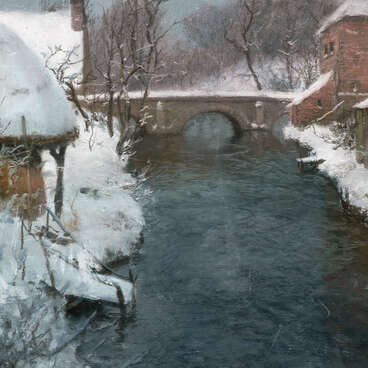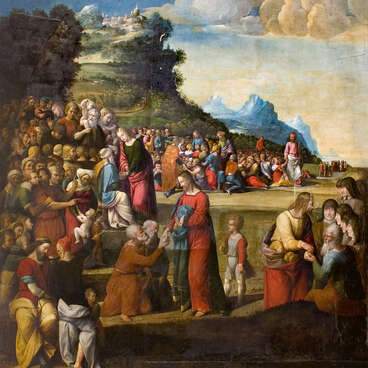The portrait of a woman by an unknown artist on display is a typical example of 17th-century Flemish chamber portraiture. This genre was often characterized by austerity and simplicity.
A chamber portrait was a half-length, pectoral or shoulder-length image of a person, usually with a neutral background, facing the viewer with three-quarters. The artist tried not only to be as close to the original as possible and accurately convey the features of the model, but also to reveal in detail the moral qualities of the hero of the painting. However, the human nature had to be shown without any attributes that would indicate the social affiliation of the character. Chamber portraits were most often commissioned to decorate the interiors of private chambers.
The woman in the portrait is dressed according to the fashion of the time: in a dark dress with a printed pattern, frilled collar, and a bonnet. Her image is also executed in accordance with the standards of the century: delicate clean skin without makeup, a high forehead, and a sleekly combed hair. The master brilliantly conveys both the texture of various fabrics (Brussels lace, the printed pattern of the dress, the folds of the collar) and the inner dignity of the lady.
Modest, reserved, devoid of any pomp and intimate in character, the “Portrait of a Woman” is distinguished by great psychological expressiveness. The character here comes across as a person with her expressive individuality, all the inherent features of her character. Pensive, mindful gaze is directed at the viewer. The artist engages in some sort of dialogue with the model.
Such female images were often paired with male portraits. The portraits of the spouses, placed side by side, continued the Dutch tradition going back to the 16th century — the tradition of the family portrait.
The Flemish painters, imitating the virtuoso technique of the old Dutch masters, preferred to paint mostly on wood. A particular kind of oak, soaked in a saline solution for at least five years, was used for this purpose. This material was very strong and durable, not exposed to pests or climatic damage. The boards were primed, then the painter applied a pattern, and in the end there was a smooth, glossy and enameled surface.
A chamber portrait was a half-length, pectoral or shoulder-length image of a person, usually with a neutral background, facing the viewer with three-quarters. The artist tried not only to be as close to the original as possible and accurately convey the features of the model, but also to reveal in detail the moral qualities of the hero of the painting. However, the human nature had to be shown without any attributes that would indicate the social affiliation of the character. Chamber portraits were most often commissioned to decorate the interiors of private chambers.
The woman in the portrait is dressed according to the fashion of the time: in a dark dress with a printed pattern, frilled collar, and a bonnet. Her image is also executed in accordance with the standards of the century: delicate clean skin without makeup, a high forehead, and a sleekly combed hair. The master brilliantly conveys both the texture of various fabrics (Brussels lace, the printed pattern of the dress, the folds of the collar) and the inner dignity of the lady.
Modest, reserved, devoid of any pomp and intimate in character, the “Portrait of a Woman” is distinguished by great psychological expressiveness. The character here comes across as a person with her expressive individuality, all the inherent features of her character. Pensive, mindful gaze is directed at the viewer. The artist engages in some sort of dialogue with the model.
Such female images were often paired with male portraits. The portraits of the spouses, placed side by side, continued the Dutch tradition going back to the 16th century — the tradition of the family portrait.
The Flemish painters, imitating the virtuoso technique of the old Dutch masters, preferred to paint mostly on wood. A particular kind of oak, soaked in a saline solution for at least five years, was used for this purpose. This material was very strong and durable, not exposed to pests or climatic damage. The boards were primed, then the painter applied a pattern, and in the end there was a smooth, glossy and enameled surface.



